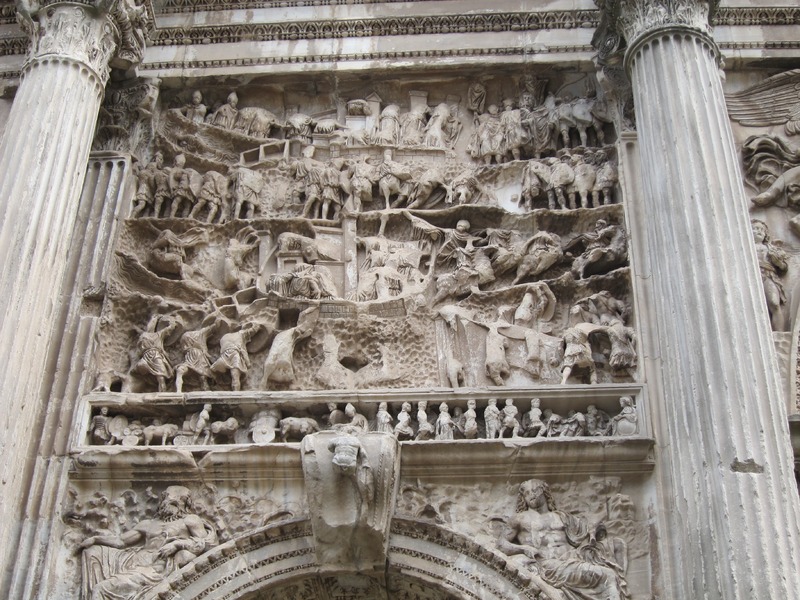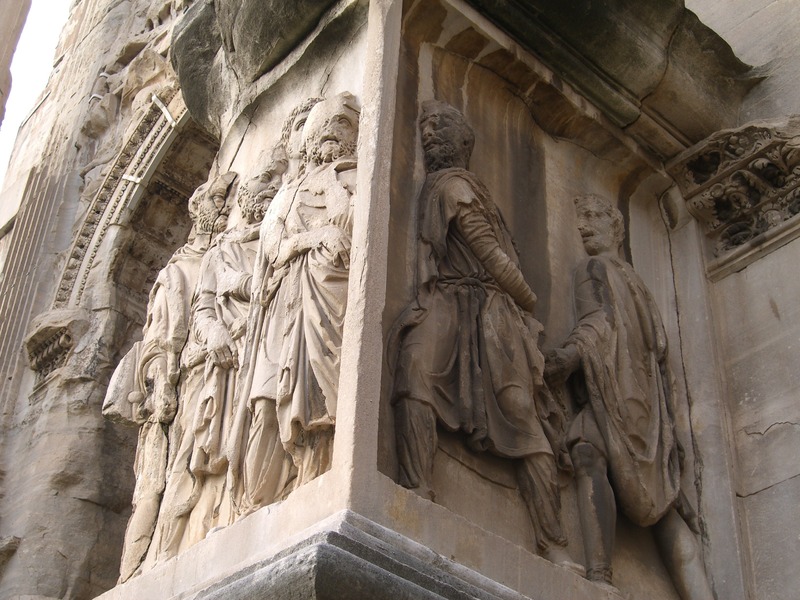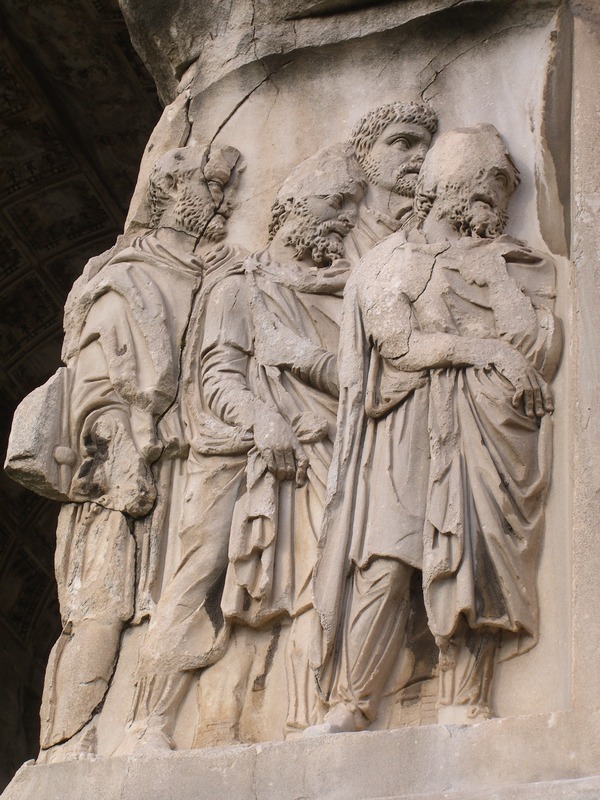Sculptures: Triumphs and Prisoners

A view of the reliefs on the arch, with the triumphal register shown below the panel

Detail of the Parthian prisoners carved onto the pedestals

A Roman soldier leads away three Parthian soldiers
A thin, triumphal frieze panel appears on all four sides of the Arch for Septimius Severus. Differing only slightly in carving style, the registers each convey a similar scene of triumphal procession. The left half of the panels repeatedly show Roman soldiers accompanying multiple ox-drawn carts filled with Parthian war spoils. A female personification of Parthia sits in the middle, dividing the composition in half. Her figure is considerably larger than the rest, and she sits slumped over as if in surrender.1 The second half of the frieze conveys a line of Roman soldiers and Parthian prisoners, who continue the procession to another personification, this time representing the goddess Roma.2 Unlike her captured Parthia, she sits clad in armor, upright, and victorious.
The immense scene of warfare above could visually overwhelm the smaller frieze register; so to counteract this possibility, the register is rendered in high-relief to improve its legibility. The dramatic play of light and shadow, as well as its organized, linear composition, draw the eye’s attention. From below, viewers can discern the barbarians from the Roman soldiers by their clothing. Men and women captives were both incorporated in the frieze, parading towards a common point: submission to Roma.3
The pedestal reliefs, some of which are greatly damaged, show Parthian captives and accompanying Roman soldiers. The Parthians bow their heads in submission as they are led away, many bound in chains. They are shorter in stature than the Roman men and wear clothing identifiable as non-Roman, and therefore ‘barbaric’. The face inwards, oriented towards the central bay — they seem to process in a line, echoing the triumphal register above. The emphasis on the prisoners of war heightens the arch’s central message of Severus’ triumph.
The pedestal reliefs also play a symbolic compositional role on the arch: the prisoners seem to hold the columns up. The prisoners function visually as the foundation of the arch and symbolically, the superiority of Septimius Severus. This repetition in subject within the pedestal reliefs and the triumphal registers would have emphasized the commemorative purpose of the monument; this, combined with the bronze statue of Septimius originally on top of the arch would have been a magnificent display of his sheer dominance over the conquered state and the power of the Roman army.
1 Richard Brilliant, The Arch of Septimius Severus in the Roman Forum. Vol. 29. (Rome: U of Michigan for the American Academy in Rome, 1967), 137.
2 Ibid.
3 Ibid.